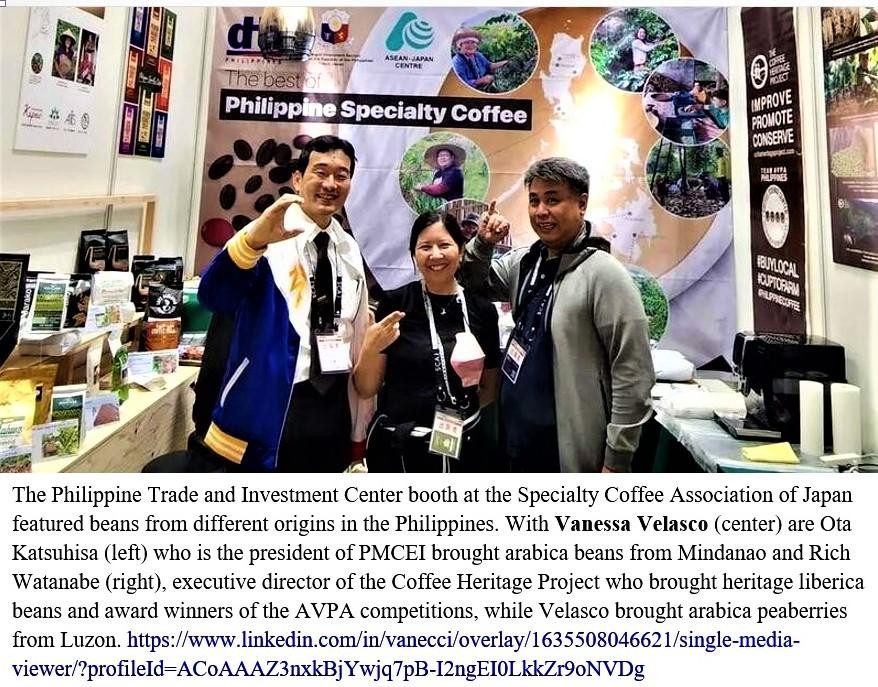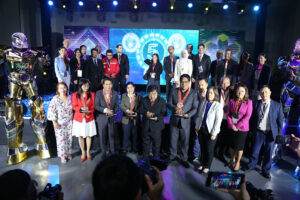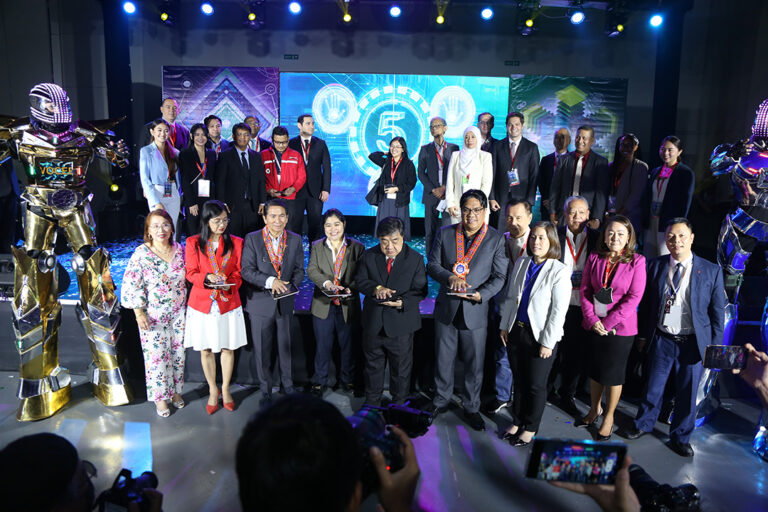By Virgilio C. Ventura
Coffee has become a staple for many people around the world, and its popularity is only rising. It’s a great way to start the day, but could it also be a great way to lead a healthier lifestyle? Recent studies have shown that lifestyle coffee, or coffee that is specifically tailored to help people reach their health goals, may be the answer.


Historical notes on the emergence of the first Philippine coffee tree go as far back as 1740, when it was introduced by Spanish Franciscan monks in Lipa, Batangas, and thereafter was successfully spread to the whole province of Batangas, which nurtured the crop that would thereafter create for them a coffee-industry-based wealth and reputation. An interesting side story to the coffee-generated wealth of the Batangan is that of the second-generation Chinese and Binondo born Telesforo Antonio Chuidian who was Rizal’s model for the Noli Me Tangere’s character of Kapitan Tiago. Despite inherited wealth from his merchant father Jose Antonio, Telesforo’s (in partnership with Manuel Buenaventura) opulence was derived from cash loans availed by coffee traders in Batangas.1/
Likewise, during the coffee rust (caused by the fungus Hemileia vastatrix) between 1869 and 1985, the Philippines (through the guidance of scientists and the industry of better skilled coffee farmers) had become by 1980 the fourth largest exporter of coffee beans compared to the severely hit coffee exporters like Brazil, Africa, and Java.
The Coffee Market
As a member of the International Coffee Organization (a group of importing and exporting coffee nations), the Philippines has established a reputation as a reliable source of high-quality coffee for countries such as Canada, Japan, and New Zealand.2/ The Philippines is also one of the few countries that can grow all four types of coffee beans: Arabica, Robusta, Excelsa, and Liberica (locally known as Kapeng Barako).

Ms. Vanessa Velasco, a management consultant and coffee bean exporter, was most happy to hear the positive reactions of Japanese coffee connoisseurs during a recent tasting event of the barako coffee in Tokyo. Given the long wait of producing the coffee beans between planting and harvesting and the vulnerability of growing the sensitive barako coffee trees to diseases explain its low production and thus rarity in the market, which in turn also explains its high price of $17 per 250 grams. Velasco is optimistic that our homegrown barako coffee will sell and create a strong following not only in Japan but globally as well. Indeed, while the barako (Batangas liberica) coffee has been around since the 18th century, it is currently experiencing a revival of sort through the fine marketing skills of exporters like Velasco and diplomatic representations of trade and industry officials of the Philippine government.3/

Coffee is life
When it comes to coffee, there are several types of lifestyle coffee that can be beneficial. First, there is functional coffee, which is designed to provide the body with specific health benefits. This type of coffee usually contains a combination of natural ingredients that are believed to help reduce inflammation, improve mental clarity, and increase energy levels. Additionally, functional coffee may also contain vitamins and minerals to help provide the body with essential nutrients. Of the four types of coffee, Liberica and Excelsa are less acidic compared to Arabica and Robusta which augurs well for healthier lifestyle.
Second, there is organic coffee, which is grown without the use of pesticides, synthetic fertilizers, or other harmful chemicals. This type of coffee has been found to contain higher levels of antioxidants, which are believed to protect the body from disease and promote overall health. Organic coffee also tends to be higher in caffeine content than regular coffee, so it can help provide a quick and sustained energy boost.
Finally, there is specialty coffee, which is typically roasted to order and brewed with a specific flavor profile in mind. Specialty coffee tends to be more expensive than other types of coffee, but it can provide a unique flavor experience that is not available with other types of coffee. Additionally, specialty coffee often contains higher levels of antioxidants and other beneficial compounds, making it a great option for those looking to improve their health.
“I think what makes Filipino coffee distinct is that there’s a wide range of how coffee from the Philippines can taste. This depends on the type of coffee, the roast style, and how it’s being consumed. Generally, the Philippines has a strong culture of instant coffee such as the 3 in 1 Nescafe sachets, which uses Robusta coffee. Then there’s kapeng barako (Liberica): a patriotic coffee that’s bold, strong, and distinctly Filipino—a lot of Filipinos like barako. Lastly, there’s specialty coffee (Arabica) from the Philippines, which I love,” explains Matt Lapid, a Los Angeles-based barista and Philippine coffee enthusiast.4/


Produced from ground beans of the coffee plant, coffee contains compounds that act like double-spy agents that could either rejuvenate our body systems or harm it as well. Compounds like caffeine (that stimulates the central nervous system that is consumed by the brain and body tissues), chlorogenic acid (that acts as an antioxidant), cafestol and kahweol that increases bad LDL cholesterol and triglyceride levels) must also be noted.
“The association between coffee consumption and the prevention of autoimmune diseases has been investigated in various types of studies. To this end, these studies have found that coffee intake can reduce the risk of Rheumatoid arthritis, autoimmune thyroid disease, diabetes, multiple sclerosis, psoriasis, autoimmune liver disease, inflammatory bowel disease, and systemic lupus erythematosus.”5/
However, “the caffeine content in a cup of coffee should not exceed 50 mg. If consumed in the long term and with levels exceeding this number, it will cause health problems, such as discolored teeth, bad breath, increasing stress and blood pressure, insomnia, heart attacks, strokes, infertility in men, addiction, and premature aging”.6/
Discussion on the health benefits of coffee leads us to really focus not only on its benefits but also on ways to mitigate its harmful effects on human health. Debates on the health benefits of coffee and its health risk potentials have been dragging on for decades as new evidence supporting its health-promoting qualities is also met with studies warning of its association with cardiovascular complications and cancer insurgence.7/
The culture of coffee drinking continues and most evident in “today’s workforce working longer hours and shouldering heavier workloads,” says Richard Castellini, chief marketing officer at CareerBuilder, who commissioned a survey involving some 3,600 workers in a news release. “The nationwide survey, conducted by Harris Interactive (with Dunkin Donuts) rated the professions with the highest proportion of workers that said they were less productive without coffee.”8/
Professions Most Dependent on Coffee
The results showed the professions most dependent on coffee were:
- Nurses
- Physicians
- Hotel workers
- Designers/architects
- Financial/Insurance sales representatives
- Food preparers
- Engineers
- Teachers
- Marketing/public relations professionals
- Scientists
- Machine operators
- Government workers
Overall, lifestyle coffee can be an excellent way to improve one’s health. It can provide the body with essential nutrients and antioxidants, and it can also provide a unique and delicious flavor experience. For those looking to make a healthy lifestyle change and with the disciplined way of coffee drinking, lifestyle coffee may be the perfect choice. END
NOTES:
1/ Today in Philippine history, January 5, 1855, Telesforo Antonio Chuidian, Rizal’s Kapitan Tiago model and General Luna’s confidant, was born in Binondo, January Historical Events, The Kahimyang Project. https://kahimyang.com/kauswagan/articles/2727/today-in-philippine-history-january-5-1855-telesforo-antonio-chuidian-rizals-kapitan-tiago-model-and-general-lunas-confidant-was-born-in-binondo
2/ The Philippine Coffee Industry, https://www.vancouverpcg.org/wp-content/uploads/2020/09/2-The-Philippine-Coffe-Industry-Rev3.pdf
3/ Pamela Castro, Giving the world a taste of Philippine coffee, NHK World, https://vimeo.com/771569750
4/ Emily Joy Meneses, Coffee in the Philippines Part 1: A Look at the Islands’ Original Farms, Barista Magazine, February 5, 2021. https://www.baristamagazine.com/coffee-in-the-philippines-part-1-a-look-at-batangas-first-farms
5/ Benedette Cuffari, How Does Coffee Affect the Immune System?, News Medical Life Sciences. https://www.news-medical.net/health/How-Does-Coffee-Affect-the-Immune-System.aspx
6/ Coffee as A Lifestyle, https://halalmui.org/en/know-coffee-as-lifestyle/
7/ Masood Sadiq Butt & M. Tauseef Sultan (2011) Coffee and its Consumption: Benefits and Risks, Critical Reviews in Food Science and Nutrition, 51:4, 363-373, DOI: 10.1080/10408390903586412
8/ Jennifer Warner, Doctors and Nurses Are Fueled by Coffee, WebMD, September 27, 2010, https://www.webmd.com/food-recipes/news/20100927/doctors-and-nurses-are-fueled-by-coffee
google.com, pub-4264550707369682, DIRECT, f08c47fec0942fa0








